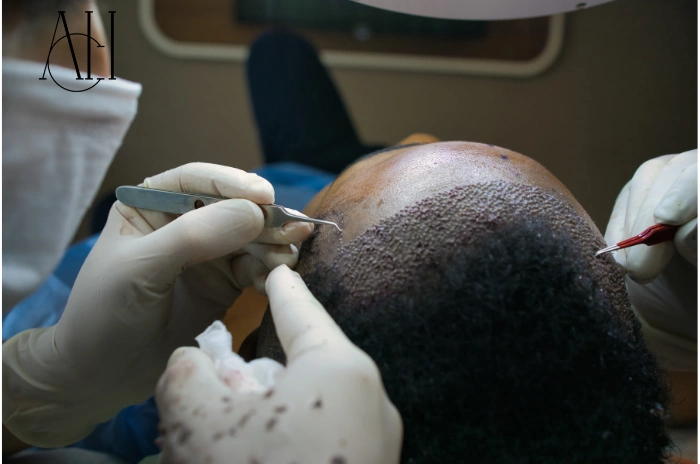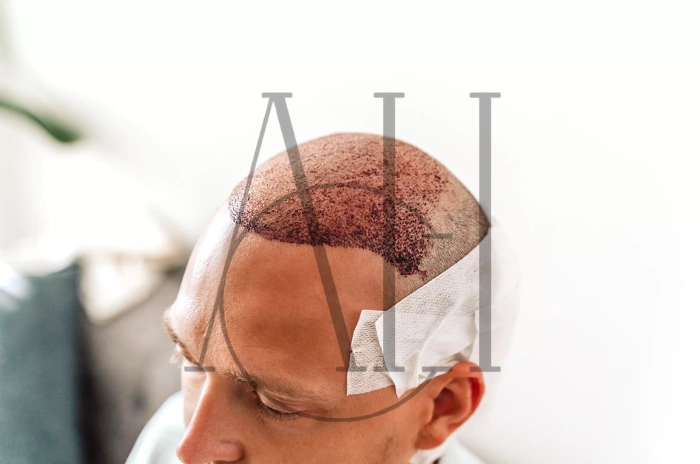Hair transplants have become one of the most trusted solutions for hair loss. While many patients see excellent results after their first procedure, some may benefit from a hair transplant touch-up session to perfect their look. Whether you’re in Germany, Spanish, Italia, France, or UK, knowing how these follow-up sessions work can help you achieve your ideal hair density and natural look. In this guide, we’ll explore the reasons for touch-ups, who needs them, the cost, recovery, and how to choose the right clinic for your next session.
Table of Contents
ToggleDo all hair transplants need touch ups
Understanding the purpose of a touch-up
Not every hair transplant requires a touch-up. However, in many cases, a follow-up session is done to increase density, correct growth direction, or fill small areas that didn’t respond well to the first treatment. Some patients may also return for slight refinements to the hairline or crown area.
Factors that influence the need for a touch-up
-
The number of grafts in the first session
-
Patient’s healing response
-
Type of hair transplant technique used (FUE, DHI, FUT)
-
Clinic experience and technology In larger cities like Berlin, London, Rome, Paris or Madrid, top clinics usually offer touch-up sessions as part of a long-term hair restoration plan. These follow-up procedures are tailored to maintain consistent results and natural aesthetics.
Who needs a hair transplant touch up
Candidates who might benefit from follow-up sessions
-
People with uneven hair growth
-
Patients who experienced graft shock loss
-
Those who had limited donor hair during the first procedure
-
Patients wanting to improve density in specific areas
Who is eligible for a hair transplant touch up
What makes a good candidate
To be eligible, patients must:
-
Have healthy donor hair available
-
Wait at least 9–12 months post-transplant
-
Be in good overall health
-
Have realistic expectations Eligibility also depends on the quality of previous work and whether the scalp has healed fully.
Consultation is key
During your follow-up consultation, doctors in Turkey or Albania will assess scalp condition, graft growth, and whether a touch-up is necessary. Surgeons will also discuss your goals and recommend the number of grafts needed to meet them.
Albania Hair Clinic – Trapianto Capelli in Albania (@albaniahairclinic)’in paylaştığı bir gönderi
How long after the initial transplant should I consider a touch up
Timing your touch-up for the best results
It’s recommended to wait at least 9 to 12 months after your first transplant before considering a touch-up. This allows hair to fully grow and the scalp to heal. By then, most patients will have visible results and can better evaluate areas that need improvement.
Why patience matters
Rushing into a second procedure can disturb existing grafts and delay results. Clinics in Turkey often use digital scalp analysis to decide the right time for additional treatment. A proper wait time ensures your surgeon works with a complete picture of your new hair growth.
How does a hair transplant touch up work
The procedure in brief
A touch-up uses the same basic technique as your original transplant, such as FUE or DHI. Surgeons extract new grafts from your donor area and implant them into thin or uneven spots. It’s a more focused and detailed procedure.
What to expect during the session
-
Local anesthesia is applied
-
Smaller number of grafts (500–1500 usually)
-
Focus on refinement rather than full coverage
-
Shorter procedure time compared to full transplant Patients in Turkey often choose touch-ups to improve frontal hairlines or fill in patchy areas. The process is highly targeted to correct minor inconsistencies.
How much does a hair transplant touch up cost
Price factors to consider
The cost varies based on location, clinic reputation, and number of grafts needed. On average:
-
New York: $4,000 – $5,000
-
London: £2,800 – £4,500
-
Turkey: $1,500 – $2,500 Prices also depend on whether you’re combining the touch-up with other treatments like PRP or laser therapy.
What’s included in the price
Many clinics include post-op care, follow-up visits, and consultation in their package. It’s important to ask what services are covered. In major clinics in Turkey , packages may also include digital analysis and aftercare kits.

How does the recovery process differ between initial transplants and touch ups
Faster healing with touch-ups
Since fewer grafts are involved, recovery after a touch-up is usually faster. Most patients return to normal activities in 3–5 days. There is minimal discomfort, and healing is generally smooth.
Less discomfort and downtime
Redness, swelling, and scabbing are minimal. Many Turkey and Albania clinics recommend saline sprays and mild shampoos to aid healing. Since touch-ups are smaller procedures, there is less risk of complications.
When to see results
Most touch-up results are visible within 6–9 months, depending on the technique used and your hair growth cycle. Patients often notice improved density and shape.
How to find your clinic for a hair transplant touch up
Choosing the right clinic in your city
Look for clinics with:
-
Certified surgeons
-
Positive online reviews
-
Before & after galleries
-
Follow-up care services Clinics often have advanced tools like robotic FUE and digital imaging. You can also ask for referrals from former patients.
Questions to ask during consultation
-
How many touch-ups have you performed?
-
What technology do you use?
-
Can I see patient results?
-
Is the follow-up included in the cost?
-
What aftercare services are provided? These questions help you make an informed choice when selecting a clinic in Turkey. It’s also important to feel comfortable and confident with your surgeon’s experience and approach.
Ideal timing when to schedule your hair transplant touch up
Work with your body’s growth cycle
Scheduling your touch-up in line with your natural hair growth can enhance your results. Surgeons may recommend seasonal timing for optimal scalp healing.
Follow professional advice
Your surgeon will guide you based on progress photos and in-person evaluations. In Turkey digital mapping tools help plan the most accurate timeline for your touch-up.

Common signs you might need a touch up
Signs to look for
-
Uneven hair density
-
Visible gaps or patches
-
Thinning in new areas
-
Receding hairline again If you notice any of these signs, book a consultation to see if a touch-up could help improve your results.
Emotional satisfaction
Patients often choose a touch-up not just for physical changes but to feel more confident. Clinics report that even small improvements can boost self-esteem greatly.
ouch-up sessions are an important part of many hair restoration journeys. Whether you’re improving hair density, correcting minor issues, or simply refining your look, a follow-up procedure can help you achieve your desired results. With expert clinics available in Turkey, and Albania, patients today have access to some of the best care worldwide. Always consult with a qualified specialist to determine if a touch-up is right for you, and enjoy the benefits of fuller, natural-looking hair. A successful touch-up can be the finishing touch to your hair restoration success story.
Frequently Asked Questions
Do all hair transplants need a touch-up session?
No, not every patient needs a touch-up. Some people get perfect results after one session, while others may need a follow-up for density or design improvements.
How long should I wait before getting a touch-up?
You should wait at least 9 to 12 months after your first hair transplant to allow full healing and hair growth before considering a touch-up.
Is a touch-up session less painful than the first transplant?
Yes. Touch-up sessions are smaller, involve fewer grafts, and usually have a quicker and more comfortable recovery than the initial procedure.
How much does a touch-up hair transplant cost?
Costs vary by city and clinic, but most touch-up sessions range from $1,500 to $4,000, depending on the number of grafts and services included.
Can I choose a different clinic for my touch-up?
Yes, you can. Just make sure the new clinic reviews your medical history, past procedure details, and offers follow-up care that suits your needs.




